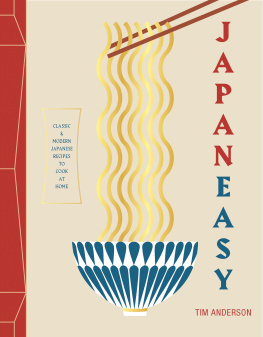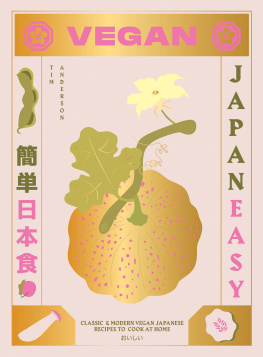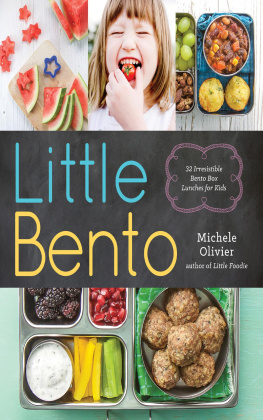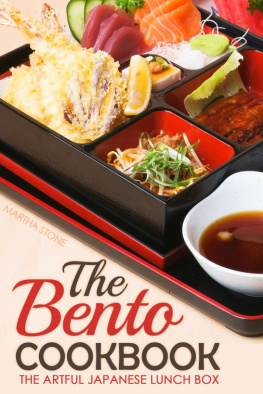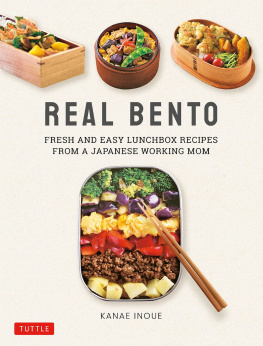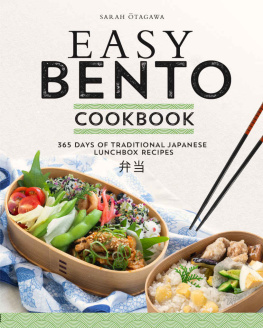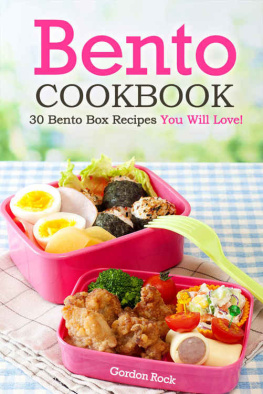
FOR BREAKFAST I EAT CONVENIENCE STORE BREAD, FOR LUNCH I EAT CONVENIENCE STORE RICE BALLS WITH SOMETHING FROM THE HOT FOOD CABINET, AND AFTER WORK IM OFTEN SO TIRED I JUST BUY SOMETHING FROM THE STORE AND TAKE IT HOME FOR DINNER.
WHEN I THINK THAT MY BODY IS ENTIRELY MADE UP OF FOOD FROM THIS STORE, I FEEL LIKE IM AS MUCH A PART OF THE STORE AS THE MAGAZINE RACKS OR THE COFFEE MACHINE.
SAYAKA MURATA,
CONVENIENCE STORE WOMAN


I wanted to call this book Your Home Conbini, but my publishers were like, Hmm, no, we let you do Your Home Izakaya and were not super stoked about doing another book with a word in its title that not everybody understands. Fair enough. So, then I proposed Bento, Breakfasts and Bowls, which has a nice rhythm to it, with the same jaunty cadence as Guy Fieris seminal Diners, Drive-ins and Dives, and I do love a little alliteration. Besides, Bento, Breakfasts and Bowls tells you exactly what youre getting! But after some discussion, my editor cut Breakfasts in the name of brevity and marketability. How dare her! Its the most important meal of the day!!!
But let me explain why I wanted conbini as part of the title in the first place. For the uninitiated, conbini (or, if we want to be pedantic about romanisation, konbini) are Japanese convenience stores and, although theyre a very mundane part of life in Japan, theyre also truly magical places. This may sound absurd, but sometimes when Im really missing Japan, I listen to conbini in-store advertising jingles and door-chime music on YouTube and have a little cry. All right, I dont actually cry, but these cheery melodies were once part of the soundtrack to my life and hearing them does momentarily bring me back to a happy place.
Its not just rose-tinted old-man wistfulness that makes me miss conbini; they really are objectively wonderful. The food at conbini is always fresh, varied, nourishing and even exciting. You can grab a classic bento, ramen salad, or egg sandwich, or you can take your time and seek out something new a limited-edition KitKat bar, a seasonal steamed bun, or even a regional speciality that may not be sold at branches of the same shop in other parts of the country. Conbini are remarkable a real triumph of logistics, food manufacturing and good old-fashioned capitalism.
Nowadays, my emotional connection to Japanese food is a mix of nostalgia for things Ive had before, comfort from the things I eat routinely and excitement for the things I havent tried yet, or dont get to have very often. Japanese convenience stores tick all three of those boxes, not to mention flavour, balance and satisfaction. And they do it quickly and consistently, twenty-four hours a day. You can always, always count on conbini.
Another thing I always miss about Japan are traditional Japanese breakfasts. To be honest, I eat these much more as a returning visitor to Japan than I did as a resident there. My breakfast was usually an onigiri (rice ball) or two and a bottle of tea from (surprise surprise) the conbini. Japanese breakfasts are highly varied and they feel nourishing and complete in a way that Western breakfasts rarely do. They are based on the super-satisfying power couple of rice and miso soup, accompanied by a variety of small vegetable and protein side dishes, such as grilled fish, eggs, pickles, nori, natt, maybe even a little salad. The permutations are endless, and thats part of the appeal they never get boring because there are always little variations you can make to change them up.
I dont recall exactly what prompted this my therapist would probably tell you its something to do with my control issues and a need to create order out of chaos but last year, I decided to try to make Japanese breakfasts as often as I could. Maybe not every day, but most days. This was facilitated by having more time at home, a change that was partly necessitated by the pandemic and partly a conscious decision. (It was also made possible by my purchase of a fancy rice cooker, which I will get into later.) But more than that, having Japanese breakfasts on a near-daily basis was made possible by maintaining a simple modus operandi: make my refrigerator into my own little conbini, always full of pre-prepared food (and drinks) from which I can cobble together a delicious Japanese meal in a matter of minutes. In Japanese, this practice is called tsukurioki roughly, make ahead and it is key to having good food at the ready, 24/7.
This is a book of recipes, of course, but its also a sort of strategy guide. Most of the recipes in this book can be prepped ahead and eaten later, either cold or reheated. In fact, some of the recipes actually improve after a day or two in the refrigerator. And the few things that cant be made ahead are super quick. This will allow you to have Japanese food for breakfast, lunch and dinner in a matter of minutes honestly, with a little planning and the right kit, you can have a Japanese meal in the amount of time it takes to boil the kettle and make a cup of tea.
The whole conbini ethos is that everybody deserves a good meal, at any time of day, every day of the week and I hope to show you how you can provide that same service for yourself or your family at home. This is everyday self-care and self-love, in rice bowl, lunchbox and breakfast form. Because after all, Japanese food is not just for special occasions Japanese food is forever.

JAPANESE MEALS
EASY AS

There are many, many different ways to serve a Japanese meal. In JapanEasy, I think I rather glibly described the main styles of Japanese serving as one big thing, a bunch of little things or one big thing with a bunch of little things around it. While this is not inaccurate, it is pretty flippant, and doesnt quite express the balance and variety found in traditional Japanese meals. In her book Atsukos Japanese Kitchen, Atsuko Ikeda has a much more eloquent description of a typical Japanese dining structure, which she calls a triangle way of eating: rice, pickles and soup provide the base of the triangle, with a large main dish at the top. (Side dishes may also be included, but they are optional.)
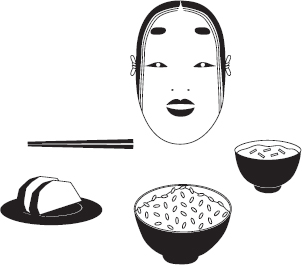
ONE SOUP, THREE SIDES (GIVE OR TAKE)
I particularly like Atsukos explanation because it uses rice, pickles and soup as the foundation, just as in the traditional format known as ichij sansai (one soup, three sides), but with greater flexibility that more accurately reflects how people in Japan actually eat. In ichij sansai, rice and pickles are a given (they dont count as the three sides), which means if you want to follow this structure to the letter, youre going to have a lot of prep to do. Luckily, you dont have to follow it to the letter. I recently discovered the Instagram hashtags for ichij nisai
Next page



